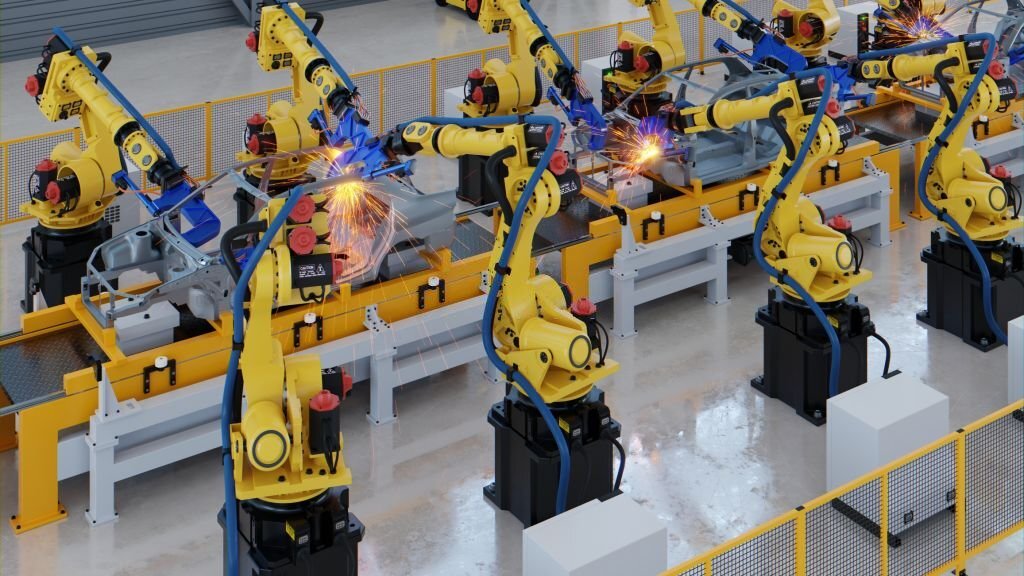
Industrial machinery plays a pivotal role in driving cost savings for businesses across various industries. With its advanced technologies, automation, and precision control mechanisms, industrial machinery offers numerous opportunities to optimize operations, reduce expenses, and enhance profitability. This article highlights key ways in which industrial machinery contributes to cost savings in industries, including increased efficiency, reduced labor costs, minimized material waste, optimized resource utilization, and improved quality control.
Increased Efficiency
Industrial machinery significantly improves efficiency compared to manual labor, leading to substantial cost savings. Machines are designed to perform tasks consistently and quickly, surpassing human capabilities. They can operate continuously without fatigue, breaks, or variations in output, resulting in higher production rates. By automating routine and time-consuming tasks, industrial machinery optimizes workflow, minimizes idle time, and ensures efficient resource utilization, ultimately driving cost savings through improved productivity.
Reduced Labor Costs
One of the significant cost-saving advantages of industrial machinery is the reduction in labor costs. Machines can replace or reduce the need for manual labor in various manufacturing processes. This reduces the dependency on a large workforce, associated labor costs such as wages, benefits, and training expenses. By leveraging industrial machinery, businesses can allocate labor resources to higher-value tasks that require human expertise, maximizing productivity and cost-efficiency.
Minimized Material Waste
Industrial machinery helps minimize material waste, contributing to cost savings in industries. Machines operate with precision and accuracy, reducing errors and waste in production processes. With precise control mechanisms and advanced sensing technology, industrial machinery ensures optimal material utilization, minimizing scrap and rejected products. By reducing material waste, businesses can save on raw material costs and minimize expenses associated with rework or disposal of wasted materials.
Optimized Resource Utilization
Industrial machinery optimizes resource utilization, leading to cost savings. By automating processes, machines can optimize the use of energy, water, and other resources required for production. They can operate at optimal speeds, reducing energy consumption and waste. Machinery’s ability to control and monitor resource usage enables businesses to identify and address inefficiencies, resulting in cost savings through reduced resource consumption.
Improved Quality Control
Industrial machinery enhances quality control, leading to cost savings associated with product defects and customer dissatisfaction. Machines perform tasks consistently and precisely, reducing variations and errors in production. Advanced control systems and sensor technology ensure accurate measurements and adherence to quality standards. By delivering products of consistent quality, industrial machinery helps minimize rework, returns, and customer complaints, thereby reducing costs related to rejections, replacements, and customer dissatisfaction.
Enhanced Process Optimization
Industrial machinery enables process optimization, contributing to cost savings. Machines can be programmed, reconfigured, or retrofitted to accommodate process improvements or changing requirements. This flexibility allows businesses to streamline and optimize production processes, reducing bottlenecks, idle time, and cycle times. By continuously optimizing processes with industrial machinery, businesses can achieve higher productivity, reduced costs, and improved overall efficiency.
Conclusion
Industrial machinery offers significant cost-saving opportunities for businesses in various industries. Increased efficiency, reduced labor costs, minimized material waste, optimized resource utilization, improved quality control, and enhanced process optimization are key ways industrial machinery contributes to cost savings. By leveraging advanced technologies, automation, and precision control mechanisms, businesses can achieve higher productivity, improved operational efficiency, and enhanced profitability. Embracing industrial machinery as a strategic investment allows businesses to drive cost savings, remain competitive, and thrive in today’s dynamic market environment.



